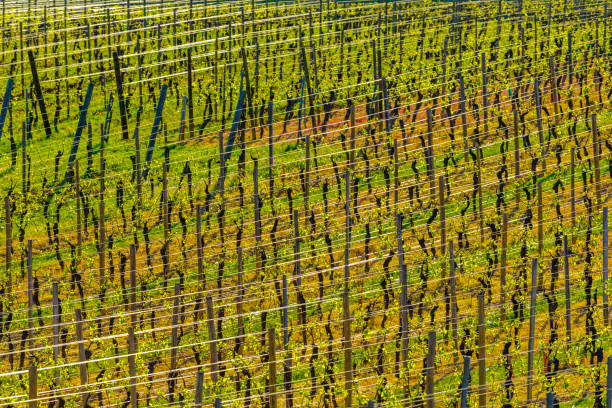Bonarda wines from Mendoza, Argentina, are celebrated for their rich flavors, deep colors, and distinctive profiles. However, refining the sensory experience of these wines requires a delicate balance of extraction methods and ingredient additions. In recent years, the utilization of microwave-assisted extraction (MAE) and the addition of stems have emerged as innovative techniques to enhance the mouthfeel sensations of Bonarda wines. This article explores the multi-method sensory approach employed in crafting these wines, focusing on the effects of MAE and stem additions on sensory attributes.
Understanding Bonarda Wines: Bonarda is one of Argentina’s most prominent grape varieties, revered for its versatility and ability to produce wines with intense fruit flavors and vibrant acidity. Originating from the Piedmont region of Italy, Bonarda found its ideal terroir in the sun-drenched vineyards of Mendoza. Here, the combination of high-altitude vineyards, arid climate, and fertile soil imparts unique characteristics to the grapes, resulting in wines with remarkable complexity and depth.
Multi-Method Sensory Approach: Crafting exceptional Bonarda wines involves a multi-method sensory approach that integrates traditional winemaking practices with modern techniques. Central to this approach is the careful manipulation of sensory attributes such as aroma, taste, texture, and mouthfeel. By employing a combination of methods, winemakers can accentuate the inherent qualities of the grapes while introducing subtle nuances that elevate the overall sensory experience.
Microwave-Assisted Extraction (MAE): Microwave-assisted extraction (MAE) has gained traction as an efficient and sustainable method for extracting compounds from grape skins and stems. Unlike conventional extraction methods that rely on prolonged maceration, MAE utilizes microwave energy to accelerate the release of phenolic compounds, flavor precursors, and tannins from the grape material. This results in wines with enhanced color stability increased aromatic complexity, and smoother tannin profiles.
In the context of Bonarda winemaking, MAE offers several advantages. By optimizing the extraction process, winemakers can extract desirable compounds while minimizing the extraction of harsh or astringent components. This allows for greater control over the wine’s sensory characteristics, ensuring a harmonious balance between fruitiness, structure, and mouthfeel. Additionally, MAE enables faster processing times, reducing the overall environmental footprint of winemaking operations.
Effect of MAE on Mouthfeel Sensations: The application of MAE in Bonarda winemaking has a profound impact on the wine’s mouthfeel sensations. By selectively extracting polyphenols and tannins from the grape skins and stems, MAE softens the wine’s texture and enhances its overall smoothness. This results in a velvety mouthfeel characterized by supple tannins and a lingering finish.
Furthermore, MAE facilitates the extraction of flavor compounds that contribute to the wine’s sensory complexity. The intensified aromas and flavors derived from the grape material enrich the palate, creating a multi-dimensional sensory experience. From ripe dark fruit notes to subtle herbal undertones, MAE-enhanced Bonarda wines exhibit a depth of flavor that captivates the senses.
Addition of Stems: In addition to MAE, the incorporation of grape stems during fermentation is another technique used to enhance the mouthfeel sensations of Bonarda wines. Traditionally, stems were removed prior to fermentation to mitigate the risk of green, vegetal flavors and harsh tannins. However, recent studies have shown that the reasonable inclusion of stems can contribute positively to the wine’s texture and structure.
When properly managed, stem inclusion introduces aeration and facilitates gentle extraction of tannins and phenolic compounds during fermentation. This results in wines with increased mouthfeel complexity heightened tannin integration, and improved overall balance. Moreover, the presence of stems can impart subtle earthy notes and savory undertones that complement the wine’s fruit-driven profile.
Combining MAE with Stem Addition: To optimize the sensory attributes of Bonarda wines, some winemakers employ a dual approach, combining MAE with stem inclusion during fermentation. This synergistic method allows for greater control over the wine’s texture, structure, and aromatic profile. By integrating the benefits of both techniques, winemakers can achieve a harmonious balance of fruitiness, depth, and complexity in the final product.
The multi-method sensory approach to crafting Bonarda wines from Mendoza exemplifies the convergence of tradition and innovation in winemaking. By harnessing the power of microwave-assisted extraction and incorporating grape stems during fermentation, winemakers can elevate the sensory experience of these wines to new heights. Through careful manipulation of extraction methods and ingredient additions, Bonarda wines embody the rich tapestry of flavors, textures, and aromas that define the terroir of Mendoza, Argentina.



